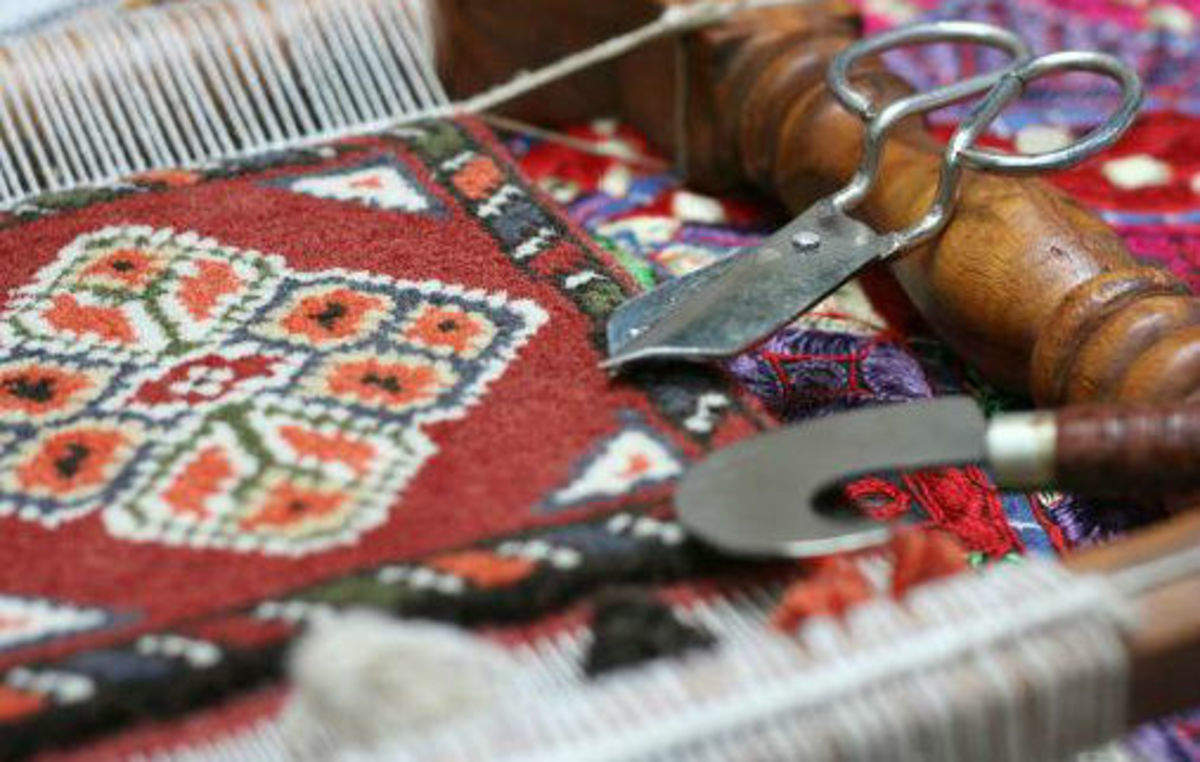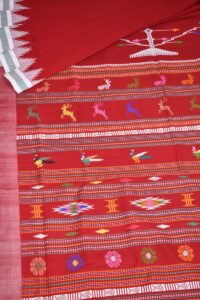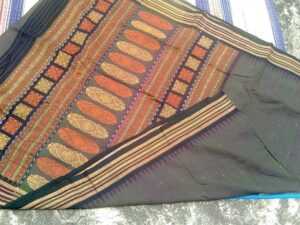Bomkai: Draped in traditions of Odisha

There are about a thousand families in Bomkai village in Odisha who still depend on different kinds of handloom work (Image Credits: indianhandloom.gov)
Like the Sambalpuri weave, the name Bomkai is synonymous with Odisha. This state is famous for its textile heritage and history that goes back to as early as 600 BC. The Bhulia community, associated with weaving, is the one involved in the production of Bomkai sarees and other new-age garments.
Bomkai originates in the village of the same name, in Ganjam district of Odisha. Also known as Sonepuri sarees, they are made across the southern coastal plains and in Sonepur of western Odisha. These sarees were worn by the royalty, the aristocracy and the Brahmins of Ganjam in ancient times. The unique aspect of these sarees is the intermixing of the two techniques of tie-and-dye and embroidery. Bomkai, meaning bandhakala in Odia language, employs ikat (binding) as well as detailed needle-work on the pallus (one part of saree worn over the shoulder), especially. Such intricate thread work is made on bright, contrasting backgrounds.
Weaving legacy into Bomkai
Based in Odisha’s capital Bhuvneshwar, artist Shankar Bhulia who has been weaving Bomkai for over two decades now, says that Bomkai sarees are made in both cotton and silk and the motifs and designs are inspired from nature and tribal art forms. “A Bomkai saree uses motifs that are quite uncommon when compared to the ubiquitous and most used designs of traditional Indian weaves. The designs are composed of beautiful motifs including karela (Bitter gourd), kanthiful (small flower), padma (Lotus), rui rachha (carp fish), koinchha (tortoise), mayur (Peacock) and chadhei (bird) in geometrical forms,” he says.
“The design of fish is very popular as it is believed to be a sign of success and affluence. A row of kumbha (a water plant) is also one of the most border motifs on Bomkai Silk,” adds Bhulia.
He further says that Bomkai still retains the original technique of weaving through the jala (net-like) technique and has not shifted entirely to the jacquard and dobby techniques like a lot of other weaving traditions. This method uses both weft and warp techniques and the sarees can be made using a very less cotton yarn. The jala is a kind of frame on which the nakshabandhs or designers first create the designs using threads, which is then attached to the pit loom on which the final weaving takes place. For more complicated designs, two jalas are used.
Bhulia says there are about a thousand families in his native village, Bomkai, where all family members still depend on different kinds of handloom work, including Bomkai weaving.
Embracing modernisation
Another artist, Prakhar Naik, who is also based in Bhuvneshwar currently say that once Bomkai sarees started using zari (threads made of gold or silver), it increased its popularity and led to an increase in Bomkai’s market demand and value. “Weavers began to use the zari as a base on which the rest of the threadwork was done and the sparkling base helps create a newer style,” Naik explains.
Some of the famous varieties that are based on Bomkai and zari weave include Sonepuri, Pasapali, Barpali and Bapta. “In addition to traditional sarees, contemporary weavers also make other garments like suits, stoles, shawls and so on to cater to a younger market and make the trade inclusive. There is an encouraging trend for handloom in domestic as well as international market today and we craftsmen are putting our best forward to be a part of it,” he adds.
Bollywood and Bomkai
According to Utpal Behera of Mumbai, who specialises in the trading of Ganjam bomkai sarees, the present day bomkai sarees are a result of many innovations and have a very strong hold on the market of luxury garments.
“You will easily see many big Bollywood actresses or politicians wering Bomkai sarees, especially with zari works. They are a luxury right now. Every time there is an award show or a wedding coming up in the Bollywood, there is an unprecedented increase in the demand of Bomkai sarees,” says Behra.
He goes on to say that the Bollywood’s obsession with Bomkai saree is clear from the fact that a Bomaki saree, called Radhakunja, designed by Chaturbhuj Meher at Sonepur, was worn by actor Aishwarya Rai Bachchan for her wedding.
According to him, because it is considered auspicious, the brahmins of the southern part of Odisha wear only Bomkai sarees on religious occasions. “And, of course, it is the preferred saree of Odissi dancers around the world,” he adds.
He also says that Odisha’s expertise in weaving handloom is unparalleled in the country. Whether it is Bomkai, Ikat or Pasapalli, the ubiquitous handloom is identifiable with the state’s rich culture and traditions.
“The modern-day challenge, however, has been how to contemporise handloom without taking away from the warp and weft for which it is sought after and artists from Odisha have done it beautifully,” he says.











